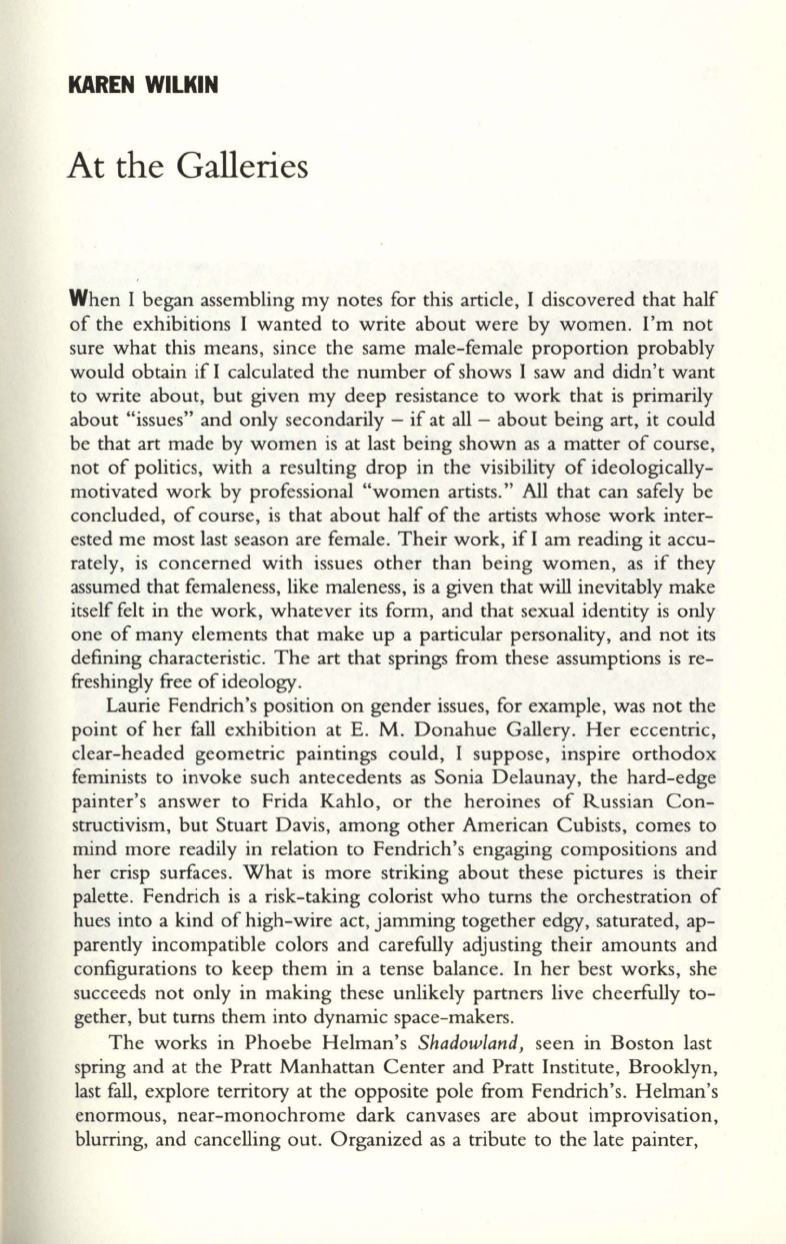
KAREN WILKIN
At the Galleries
When I began assembling my notes for this article, I discovered that half
of the exhibitions I wanted to write about were by women. I'm not
sure what this means, since the same male-female proportion probably
would obtain if I calculated the number of shows I saw and didn't want
to write about, but given my deep resistance to work that is primarily
about "issues" and only secondarily - if at all - about being art, it could
be that art made by women is at last being shown as a matter of course,
not of politics, with a resulting drop in the visibility of ideologically–
motivated work by professional "women artists." All that can safely be
concluded, of course, is that about half of the artists whose work inter–
ested me most last season are female. Their work, if I am reading it accu–
rately, is concerned with issues other than being women, as if they
assumed that femaleness, like maleness, is a given that will inevitably make
itself felt in the work, whatever its form, and that sexual identity is only
one of many elements that make up a particular personality, and not its
defining characteristic. The art that springs from these assumptions is re–
freshingly free of ideology.
Laurie Fendrich's position on gender issues, for example, was not the
point of her fall exhibition at E. M. Donahue Gallery. Her eccentric,
clear-headed geometric paintings could, I suppose, inspire orthodox
feminists to invoke such antecedents as Sonia Delaunay, the hard-edge
painter's answer to Frida Kahlo, or the heroines of Russian Con–
structivism, but Stuart Davis, among other American Cubists, comes to
mind more readily in relation to Fendrich's engaging compositions and
her crisp surfaces. What is more striking about these pictures is their
palette. Fendrich is a risk-taking colorist who turns the orchestration of
hues into a kind of high-wire act, jamming together edgy, saturated, ap–
parently incompatible colors and carefully adjusting their amounts and
configurations to keep them in a tense balance. In her best works, she
succeeds not only in making these unlikely partners live cheerfully to–
gether, but turns them into dynamic space-makers.
The works in Phoebe Helman's
Shadowland,
seen in Boston last
spring and at the Pratt Manhattan Center and Pratt Institute, Brooklyn,
last fall, explore territory at the opposite pole from Fendrich's. Helman's
enormous, near-monochrome dark canvases are about improvisation,
blurring, and cancelling out. Organized as a tribute to the late painter,


